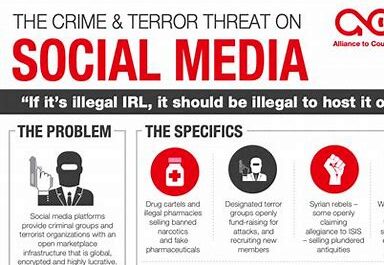- Title: Women in Crime: Breaking Stereotypes
Introduction

The world of crime has long been portrayed as a male-dominated domain, where men are often depicted as the primary perpetrators of criminal activities. However, the reality is far more complex, with women playing diverse roles in various facets of crime. In this essay, we explore the multifaceted experiences of women in crime, challenging stereotypes and shedding light on their often overlooked contributions and challenges.
1. Defying Stereotypes: Rethinking Gender Roles in Crime
Women have historically been relegated to the sidelines in discussions about crime, viewed primarily as victims rather than perpetrators. However, the reality is more nuanced, with women engaging in a wide range of criminal activities, from petty theft to white-collar crime.
2. Types of Crimes Committed by Women

Women are involved in a diverse array of criminal activities, including drug trafficking, fraud, cybercrime, domestic violence, and organized crime. By examining the breadth of women’s involvement in crime, we can challenge stereotypes and better understand the complexities of criminal behavior.
3. Intersectionality: Exploring the Interplay of Gender, Race, and Socioeconomic Factors
Women’s experiences in crime are shaped by intersecting factors, including gender, race, ethnicity, and socioeconomic status. For marginalized women, such as women of color and those from low-income backgrounds, involvement in crime may be influenced by systemic inequalities and limited opportunities for social and economic advancement.
4. Under-Representation in Crime Statistics
Women’s participation in crime is often under-represented in official crime statistics, reflecting biases in reporting and law enforcement practices. By acknowledging the prevalence of women’s involvement in crime, we can challenge the invisibility of their experiences and advocate for more inclusive approaches to crime prevention and intervention.
5. Motivations Behind Women’s Involvement in Crime

Women’s motivations for engaging in criminal activities are diverse and multifaceted. While some may be driven by economic necessity or survival, others may be influenced by factors such as peer pressure, trauma, or coercion. Understanding these motivations is essential for developing effective interventions and support services for women involved in crime.
6. Gendered Nature of Crime: Exploring Power Dynamics and Control
The gendered nature of crime reflects broader power dynamics and social inequalities. For example, women may become involved in crime as a means of exerting agency in patriarchal societies where traditional avenues of empowerment are limited. By examining the gendered dimensions of crime, we can gain insights into the complex interplay of power, control, and agency.
7. Challenges Faced by Women in Crime
Women involved in crime face unique challenges, including stigma, discrimination, and limited access to support services. Additionally, women may be more vulnerable to exploitation and victimization within criminal networks, further exacerbating their marginalization.
8. Criminal Justice System Responses
The criminal justice system’s response to women involved in crime varies widely, with biases and stereotypes often influencing outcomes. Women may be disproportionately penalized or overlooked in sentencing and rehabilitation efforts, highlighting the need for gender-sensitive approaches to justice.
9. Trauma and Healing: Addressing the Root Causes
Many women involved in crime have experienced trauma and adversity throughout their lives, including childhood abuse, poverty, and discrimination. Addressing the root causes of women’s involvement in crime requires holistic approaches that prioritize trauma-informed care, mental health support, and access to resources for healing and recovery.
10. Breaking the Cycle: Empowering Women to Build Better Futures
Empowering women involved in crime to break the cycle of offending requires a comprehensive approach that addresses their unique needs and circumstances. This includes providing educational opportunities, vocational training, housing assistance, and access to supportive networks and mentors.
11. Rehabilitation and Reintegration
Efforts to rehabilitate and reintegrate women involved in crime into society must be gender-responsive and tailored to their specific needs. This may involve providing access to counseling, substance abuse treatment, job placement services, and legal assistance to address underlying issues and support successful reintegration.
12. Empowering Voices: Elevating Women’s Perspectives
Elevating the voices and perspectives of women involved in crime is essential for understanding the complexities of their experiences and informing more effective policies and interventions. By centering their narratives, we can challenge stereotypes and advocate for more inclusive approaches to crime prevention and justice.
13. Intersectional Approaches: Recognizing Diversity and Complexity
Recognizing the diversity and complexity of women’s experiences in crime requires intersectional approaches that acknowledge the intersecting factors shaping their lives. This includes considering the impact of race, ethnicity, sexual orientation, disability, and other identities in understanding women’s involvement in crime.
14. Advocacy and Awareness: Promoting Gender Equality in Crime Prevention
Advocating for gender equality in crime prevention and intervention efforts is crucial for addressing the root causes of women’s involvement in crime and promoting social justice. This includes raising awareness about the unique challenges faced by women in the criminal justice system and advocating for policy reforms that prioritize gender-responsive approaches.
15. Community Engagement: Building Supportive Networks
Building supportive networks and community-based interventions is essential for empowering women involved in crime to create positive change in their lives. This includes fostering partnerships between government agencies, non-profit organizations, community leaders, and grassroots initiatives to provide wrap-around support and opportunities for women’s empowerment.
16. Peer Support and Mentorship
Peer support and mentorship play a vital role in empowering women involved in crime to build resilience, confidence, and self-efficacy. By connecting women with mentors who have overcome similar challenges, we can provide valuable guidance, encouragement, and role modeling for positive change.
17. Legal Advocacy and Rights Awareness

Legal advocacy and rights awareness are critical for ensuring that women involved in crime have access to justice and are treated fairly within the criminal justice system. This includes providing legal representation, advocating for fair sentencing practices, and raising awareness about women’s rights and entitlements under the law.
18. Economic Empowerment: Creating Opportunities for Financial Stability

Economic empowerment is essential for women involved in crime to achieve financial stability and independence. This includes providing access to education, job training, microfinance programs, and entrepreneurship opportunities to


